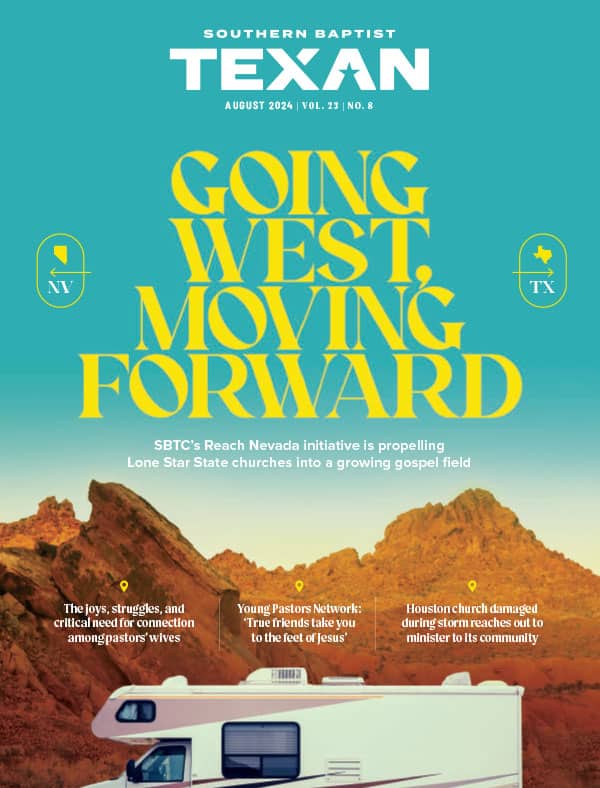Where do you go to find the gospel spreading in unprecedented ways? Instead of looking to one of 42,000 Southern Baptist churches, some missiologists point to amazing accounts of church-planting movements (CPMs) overseas.
Mission strategist David Garrison wrote the book on CPMs, serving as an associate vice president for strategy coordination and mobilization at the International Mission Board before his current assignment as a regional leader in South Asia. He defined a church-planting movement as “a rapid and multiplicative increase of indigenous churches planting churches within a given people group or population segment.”
Garrison believes the goal of all efforts is for God to be glorified, a natural result of individuals entering into right relationship with him through Jesus Christ. “As they do, they are incorporated into churches which enable them to continue to grow in grace with other like-minded believers,” Garrison wrote in “Church-Planting Movements.” “Any time people come to new life in Jesus Christ, God is glorified. Any time a church is planted?no matter who does it?there are grounds for celebration.”
The IMB defines a local church as “a group of baptized believers covenanted together into a community by the Holy Spirit for the purpose of worship, fellowship, nurture and ministry, with the following characteristics:
• meet regularly for worship, fellowship, and mutual support in ministry;
• proclaim Christ to unbelievers;
• disciple believers;
• organize and administer their affairs, choosing leadership who may or may not be paid, trained, ordained or one of the members of the group; and
• administer the ordinances of baptism and the Lord’s Supper.
Those characteristics fall in line with the terminology of church growth experts who describe the marks of a healthy church by their pursuit of five purposes: 1) worship, 2) evangelistic and missionary outreach, 3) education and discipleship, 4) ministry and 5) fellowship. “In each of the Church Planting Movements we studied, these five core functions were evident,” Garrison wrote.
IMB writer Erich Bridges cited these examples of church-planting movements:
• A new missionary led a local student to Christ. He immediately taught the student not only how to share the gospel with others but how to teach them to share with still others. Hundreds of people became believers within months.
• Another missionary evangelized and trained his language tutor, who in turn led a housemaid to the Lord, who led her husband to the Lord, who led his in-laws to the Lord, followed by a dramatic physical healing and stiff persecution. The eventual result: Within six months, a tribe that once had no Christian believers had churches in more than 20 villages.
? In a third case, a missionary worked with several cycles of church planters who began a cluster of congregations among a tribal group. Six months later a second generation of churches was born. They also began reproducing, and within 18 months a third generation emerged.
Southern Baptists have one missionary unit [or couple] for every 1.8 million people, according to IMB President Jerry Rankin. That figure expands to one unit for every 9.6 million people in South Asia.
“Even the most effective personal witness would never be able to touch such a large population segment,” he said. As a result, Rankin and other IMB leaders look to church-planting movements as the best way spread the gospel. “A network of local churches potentially makes the gospel accessible to an entire people group, a nation and the whole world,” he told IMB trustees last fall.
Recognizing that the grassroots phenomenon of CPM can be fertile ground for heresy, Garrison believes the key to sound doctrine is God’s word. “In the explosive church growth environment of the first century, there were no seminaries, simply a practice of ‘teaching them to observe whatsoever things I have commanded you,'” he said, citing Matt. 28:20. “Out of this mandate grew a number of approaches to discipleship and training. The challenge of the first century has changed little for us today and invites the same types of creative responses to ensure a continued faithfulness to Christ’s teachings.”
One of the best ways to stifle such incredible growth is to impose extra-biblical requirements before viewing a group of believers as a church, he warned. “When a mission, union or convention attempts to require a congregation to have extra-biblical things such as land, a building, seminary-trained leadership or paid clergy before granting them full status as a church, a church planting movement is obstructed,” Garrison wrote.
“Christians may have the best of intentions when they impose preconditions before officially constituting a church?preconditions usually aimed at ensuring viability of the church before leaving it to its own devices. However, requirements such as building, property and salaried clergy quickly can become millstones around the neck of the church and make reproducing itself all th








